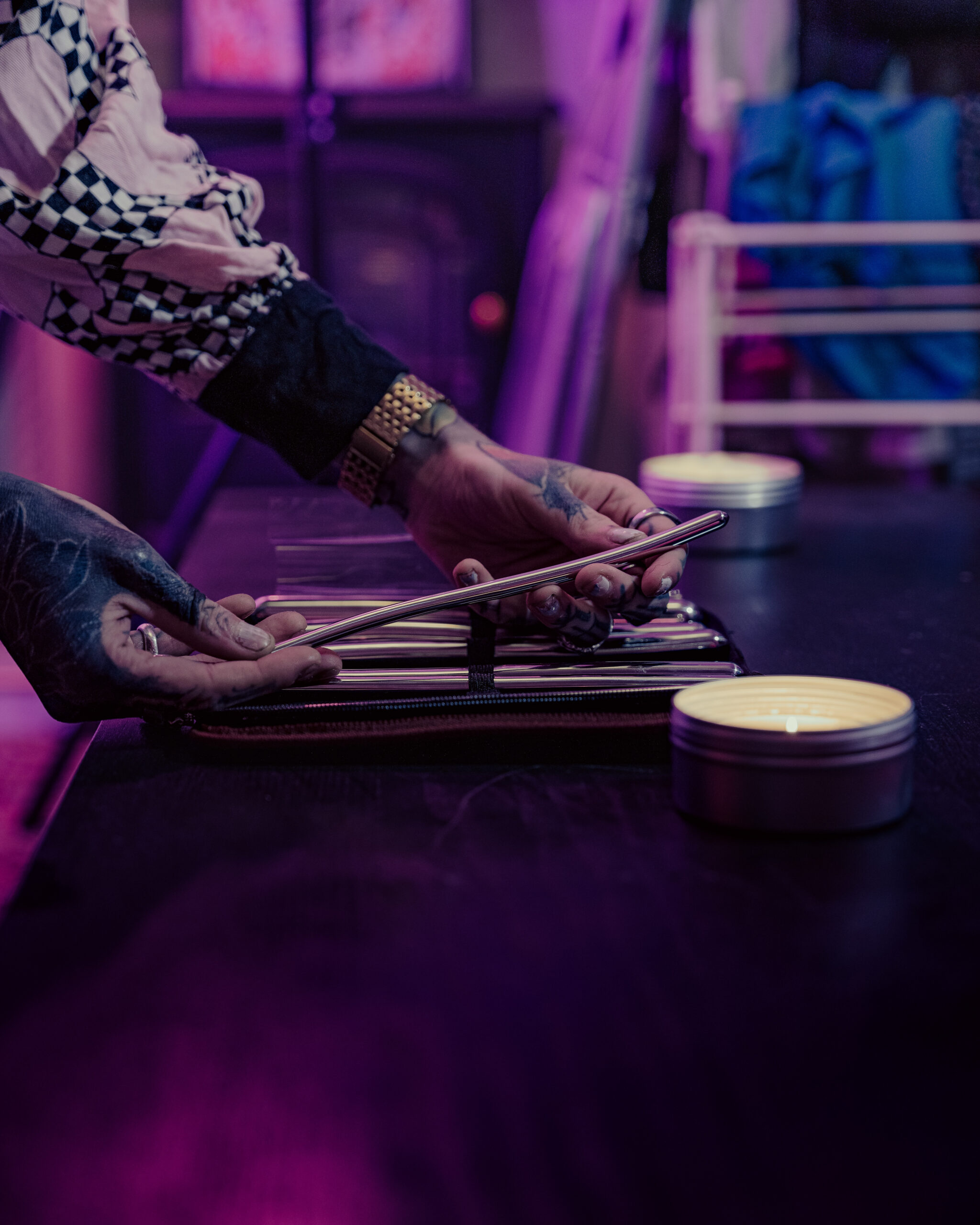Understanding Demigender Identities
Demigender identities represent a growing understanding of gender as fluid and multifaceted. This exploration delves into the nuances of demigender experiences, shedding light on individuals who identify partially with one gender and partially with another or outside the binary system altogether.
Definitions and Characteristics
Demigender encompasses a spectrum of identities where an individual partially identifies with one gender while also experiencing a partial or full disconnect from another gender. Unlike non-binary identities, which exist outside the traditional male/female binary entirely, demigender individuals still maintain some connection to one specific gender. For example, someone who is demigirl might identify strongly as female in some aspects of their life but not fully embody all aspects of femininity. Similarly, a demiboy may feel partially aligned with masculinity while also experiencing disconnect from traditional masculine traits or expectations.
The characteristics and experiences associated with demigender identities are diverse and personal. Some demigender individuals might experience fluctuating gender expression, where their identification shifts depending on context or mood. Others may have a more stable demigender identity but still feel a sense of ambiguity or fluidity within that label. It’s important to remember that each individual’s experience is unique and should be respected as such.
Spectrum of Demigender Experiences
Understanding demigender identities requires recognizing the spectrum of experiences within this category. It’s crucial to remember that demigender individuals are not a monolithic group; their identities are diverse and evolve over time. Some individuals may experience strong connections to one gender while feeling partially disconnected from another, leading to a fluctuating sense of self. Others might have a more stable demigender identity but still navigate ambiguity within that label.
The fluidity of demigender experiences highlights the complexity of gender expression and identity. It challenges traditional binary understandings and emphasizes the individual’s right to define their own experience, regardless of societal norms or expectations.

Common Misconceptions
Demigender identities are often misunderstood due to a lack of familiarity with the nuances of gender fluidity. One common misconception is that demigender individuals are simply “halfway” between two genders, suggesting a binary framework. In reality, demigender experiences are more complex and multifaceted, representing a spectrum rather than a midpoint.
Another misconception is that demigender identities are temporary or transient phases that people eventually grow out of. Demigender identities can be deeply personal and enduring, evolving over time like any other aspect of self-expression. It’s important to avoid making assumptions about someone’s identity based on perceived changes or fluctuations.
Furthermore, some people mistakenly believe that demigender individuals must explicitly identify with a specific gender binary label (male or female) as a part of their identity. However, demigender identities exist beyond the constraints of traditional binaries. Individuals may identify with aspects of one gender while simultaneously rejecting other aspects, creating unique and individualized experiences.
Relationship Fluidity and Demisexuality
Relationship fluidity and demisexuality are often intertwined concepts within discussions of modern sexualities. Relationship fluidity refers to an individual’s evolving desires and preferences regarding relationship structures, acknowledging that romantic and sexual connections can shift and adapt over time. Demisexuality describes a sexual orientation where individuals experience sexual attraction only after forming a strong emotional bond with someone. This combination of fluidity in relationships and a unique expression of sexuality challenges traditional norms and offers a broader understanding of how people connect and experience intimacy.
Exploring the Connection
Relationship fluidity and demisexuality often intertwine, reflecting the diversity of human experiences and desires within modern sexualities. Relationship fluidity acknowledges the ever-changing nature of romantic and sexual preferences, recognizing that individuals may desire different types of connections at various points in their lives. This can encompass shifting relationship structures, exploring non-traditional partnerships, or navigating evolving levels of intimacy.
Demisexuality adds another layer to this complexity by defining a sexual orientation where individuals experience sexual attraction only after establishing a deep emotional bond with someone. This means that the foundation for physical intimacy is rooted in strong emotional connection and trust, rather than initial physical attraction alone.
The combination of relationship fluidity and demisexuality creates unique pathways to intimacy and connection. Individuals who identify with both concepts might seek relationships characterized by emotional depth, gradual development of intimacy, and an openness to exploring various relationship structures as they evolve over time. These individuals often value authenticity, communication, and the exploration of meaningful connections that extend beyond purely physical attraction.
Defining Demisexuality
Demisexuality is a sexual orientation characterized by experiencing sexual attraction only after forming a strong emotional bond with someone. Unlike those who experience initial sexual attraction to someone they’re interested in, demisexual individuals don’t feel sexual desire until a deeper level of emotional intimacy has been established.
For demisexual individuals, the emotional connection is paramount. Building trust, sharing vulnerabilities, and developing a sense of deep understanding with another person are essential prerequisites for experiencing sexual attraction.

Overlapping Identities
Relationship fluidity and demisexuality often intertwine, reflecting the diversity of human experiences and desires within modern sexualities.
Relationship fluidity acknowledges the ever-changing nature of romantic and sexual preferences, recognizing that individuals may desire different types of connections at various points in their lives. This can encompass shifting relationship structures, exploring non-traditional partnerships, or navigating evolving levels of intimacy.
Demisexuality adds another layer to this complexity by defining a sexual orientation where individuals experience sexual attraction only after establishing a deep emotional bond with someone. This means that the foundation for physical intimacy is rooted in strong emotional connection and trust, rather than initial physical attraction alone.

The combination of relationship fluidity and demisexuality creates unique pathways to intimacy and connection. Individuals who identify with both concepts might seek relationships characterized by emotional depth, gradual development of intimacy, and an openness to exploring various relationship structures as they evolve over time. These individuals often value authenticity, communication, and the exploration of meaningful connections that extend beyond purely physical attraction.
Demisexuality is a sexual orientation characterized by experiencing sexual attraction only after forming a strong emotional bond with someone. Unlike those who experience initial sexual attraction to someone they’re interested in, demisexual individuals don’t feel sexual desire until a deeper level of emotional intimacy has been established.
For demisexual individuals, the emotional connection is paramount. Building trust, sharing vulnerabilities, and developing a sense of deep understanding with another person are essential prerequisites for experiencing sexual attraction.
Cultural and Social Impact
The exploration of gender identity continues to evolve, revealing complexities beyond traditional binary notions. Demigender identities stand as a testament to this evolution, offering a nuanced understanding of how individuals experience and express their gender. These identities challenge conventional frameworks and provide valuable insights into the fluidity and diversity of human experience.
Visibility and Representation
Cultural and social impact of demigender identities is multifaceted and evolving. The increased visibility of these identities challenges traditional gender norms and binaries, fostering a greater understanding and acceptance of diverse gender expressions.
Representations of demigender individuals in media, literature, and popular culture are crucial for amplifying their voices and experiences. Authentic and nuanced portrayals help break down stereotypes and misconceptions, promoting empathy and inclusivity.
Visibility plays a vital role in creating a more inclusive society where individuals feel seen and validated. As demigender identities gain more recognition, it creates space for self-discovery and empowers individuals to express their true selves without fear of judgment or discrimination.
However, there are still challenges and barriers faced by demigender individuals. Stigma, lack of understanding, and discrimination persist in some communities. Continued education, open dialogue, and advocacy are essential for creating a more supportive environment where all gender identities are respected.
The journey towards full acceptance and equality for demigender individuals is ongoing. It requires collective effort to dismantle harmful societal norms and create a world where everyone feels empowered to live authentically as their true selves.
Challenges and Discrimination
Demigender identities represent a growing understanding of gender as fluid and multifaceted. This exploration delves into the nuances of demigender experiences, shedding light on individuals who identify partially with one gender and partially with another or outside the binary system altogether.
Cultural and social impact of demigender identities is multifaceted and evolving. The increased visibility of these identities challenges traditional gender norms and binaries, fostering a greater understanding and acceptance of diverse gender expressions.
Representations of demigender individuals in media, literature, and popular culture are crucial for amplifying their voices and experiences. Authentic and nuanced portrayals help break down stereotypes and misconceptions, promoting empathy and inclusivity.
Visibility plays a vital role in creating a more inclusive society where individuals feel seen and validated. As demigender identities gain more recognition, it creates space for self-discovery and empowers individuals to express their true selves without fear of judgment or discrimination. However, there are still challenges and barriers faced by demigender individuals. Stigma, lack of understanding, and discrimination persist in some communities. Continued education, open dialogue, and advocacy are essential for creating a more supportive environment where all gender identities are respected.
The journey towards full acceptance and equality for demigender individuals is ongoing. It requires collective effort to dismantle harmful societal norms and create a world where everyone feels empowered to live authentically as their true selves.
Advocacy and Support
Cultural and social impact of demigender identities is multifaceted and evolving. The increased visibility of these identities challenges traditional gender norms and binaries, fostering a greater understanding and acceptance of diverse gender expressions.
Representations of demigender individuals in media, literature, and popular culture are crucial for amplifying their voices and experiences. Authentic and nuanced portrayals help break down stereotypes and misconceptions, promoting empathy and inclusivity.
Visibility plays a vital role in creating a more inclusive society where individuals feel seen and validated. As demigender identities gain more recognition, it creates space for self-discovery and empowers individuals to express their true selves without fear of judgment or discrimination.
- Continued education, open dialogue, and advocacy are essential for creating a more supportive environment where all gender identities are respected.
- The journey towards full acceptance and equality for demigender individuals is ongoing. It requires collective effort to dismantle harmful societal norms and create a world where everyone feels empowered to live authentically as their true selves.
Further Exploration
Demigender identities represent a growing understanding of gender as fluid and multifaceted. This exploration delves into the nuances of demigender experiences, shedding light on individuals who identify partially with one gender and partially with another or outside the binary system altogether.
Resources for Learning More
To delve deeper into demigender identities and related concepts, explore these resources:
- GLAAD provides valuable information and resources on LGBTQ+ media representation, including demigender identities.
- The Trevor Project offers support and resources for LGBTQ+ youth, including information about demigender experiences and relationship fluidity.
- Genderbread is a comprehensive website exploring gender identity, expression, and attraction with interactive tools and educational resources.
- The Human Rights Campaign advocates for LGBTQ+ equality and provides information on demigender identities and related issues.
Community Engagement
Further exploration of demigender identities and the complexities of gender expression can involve engaging with the broader community.
- Online Communities: Connecting with online forums, support groups, and social media communities dedicated to LGBTQ+ individuals, particularly those focusing on demigender experiences, provides a platform for sharing stories, seeking advice, and finding a sense of belonging.
- Local Organizations: Many cities and towns have LGBTQ+ centers or organizations that offer workshops, events, and support services. These spaces can be valuable resources for connecting with other demigender individuals, allies, and community members who advocate for inclusivity.
- Educational Events: Attending talks, presentations, or panels on gender identity, sexuality, and related topics hosted by universities, community centers, or LGBTQ+ organizations allows for learning from experts and engaging in meaningful discussions.
Personal Reflection and Growth
Further exploration of demigender identities can be a deeply personal journey of self-discovery. It involves reflecting on one’s own experiences, exploring diverse perspectives, and engaging with the broader community.
Personal reflection is crucial for understanding your own gender identity. Journaling about feelings, thoughts, and experiences related to gender can provide valuable insights. Consider asking yourself questions like: What aspects of traditional gender roles resonate with me? Which ones don’t? How do I feel when others perceive me as a certain gender? What feels most authentic to me?
Engaging with resources like books, articles, and online communities dedicated to demigender experiences can broaden your understanding. Connecting with other demigender individuals through support groups or online forums allows you to share experiences, learn from others’ journeys, and build a sense of community. Remember that there is no right or wrong way to explore your identity. It’s a process of self-discovery that unfolds uniquely for each individual. Be patient with yourself, embrace curiosity, and allow yourself the space to evolve and grow.
monkey style sex
See full topic breakdown
Catch the full blog article
- How To Safely Use Kratom Capsules For Anxiety And Depression - September 22, 2025
- Downturned Smile Treatment Near Send, Surrey - September 21, 2025
- Dermal Fillers Near Chessington, Surrey - September 20, 2025
